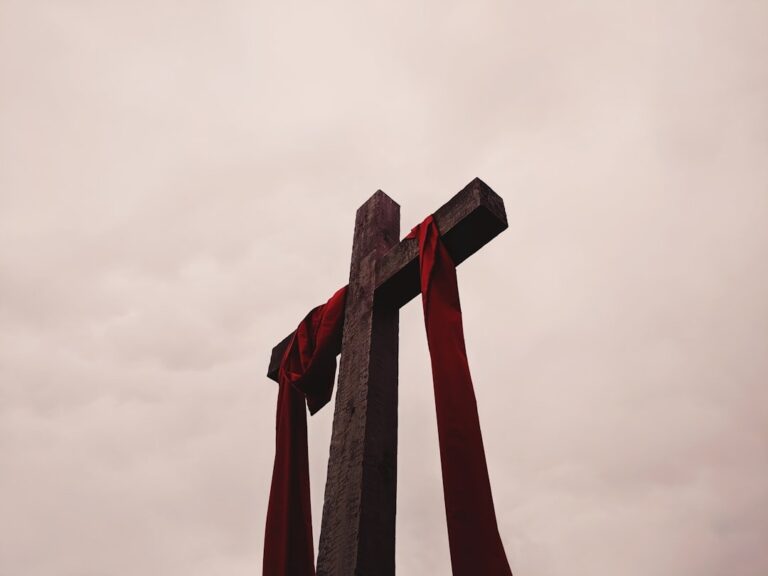
Today, April 18, 2025, Christians across Kenya and around the world observe Good Friday, a solemn day commemorating the crucifixion of Jesus Christ. This pivotal moment in the Christian calendar invites believers to reflect on themes of sacrifice, redemption, and hope. The significance of Good Friday resonates deeply with Christians, as it marks the culmination of the Lenten season, a period of penance, reflection, and fasting leading up to Easter Sunday. Many churches hold special services that recount the story of the crucifixion, encouraging congregations to engage with the biblical narratives and understand the profound implications of Christ’s death for humanity.
In Kenya, Good Friday is a gazetted public holiday, observed nationwide with reverence and devotion. Churches across the country, from Nairobi to Nakuru, held special services, including the Stations of the Cross, where congregants retraced Jesus’s path to Calvary. This ritual allows participants to immerse themselves in the journey of Christ, experiencing the emotions and hardships He faced.
Additionally, many faithful participated in processions, prayer vigils, and fasting, reflecting on the profound significance of Christ’s sacrifice. These activities are not only acts of worship but also serve as a reminder of the values of humility and serving others, as communities come together in a spirit of solidarity.
The day also serves as a time for communal unity, with families gathering for prayer and reflection. In urban centers and rural areas alike, Kenyans embraced the spirit of the day, emphasizing compassion, forgiveness, and spiritual renewal. Many families create sacred spaces in their homes, where they hold prayer sessions and discuss the meaning of Good Friday, fostering a deeper understanding of their faith. This family-oriented approach not only strengthens familial bonds but also instills a sense of community and shared beliefs, which are essential during these reflective times.
Around the world, Good Friday was marked by a tapestry of traditions, each reflecting the cultural context of its practitioners. In Jerusalem, pilgrims walked the Via Dolorosa, believed to be the path Jesus took to his crucifixion, creating a deep spiritual connection with the events of that day. In Malta, elaborate processions featured life-sized statues depicting scenes from the Passion, drawing locals and tourists alike to witness the depth of faith expressed through art and tradition.
In the Philippines, some devotees engaged in self-flagellation and crucifixion reenactments, expressing penance and devotion, which highlights the diverse ways in which faith can manifest in both personal and communal practices. These practices serve to reinforce the core message of Good Friday, inviting believers to partake in the narrative of sacrifice and redemption.
The Associated Press curated a photo collection titled “Good Friday Around the World,” capturing these diverse expressions of faith and the universal themes of sacrifice and hope that unite Christians globally. This collection not only showcases the various ways Good Friday is observed but also serves as a visual reminder of the shared beliefs that transcend geographical boundaries. Each image tells a story, reflecting the unique cultural practices and traditions that characterize the observance of this holy day, ultimately weaving a narrative of unity amidst diversity.
In the United Kingdom, King Charles III released an emotional Easter message ahead of the royal family’s annual celebrations. Attending the Royal Maundy Service at Durham Cathedral, the King distributed specially-minted coins to 76 individuals, honoring their community service. This gesture is a long-standing tradition that reflects the royal family’s commitment to service and charitable work.
In his message, he emphasized the enduring values of faith, hope, and love, stating, “The abiding message of Easter is that God so loved the world that He sent His son to live among us to show us how to love one another.” This reflection encourages individuals to embody these values in their daily lives, reinforcing the importance of community and compassion during the Easter season.
Good Friday is a cornerstone of Christian faith, symbolizing the ultimate act of love and sacrifice. It’s a day that transcends cultural and national boundaries, uniting believers in contemplation and gratitude. As the world navigates challenges and uncertainties, the message of Good Friday offers solace and inspiration to many. The observance of this day encourages individuals to reflect on their own lives, prompting self-examination and a recommitment to their faith. As communities gather together to share in the somber yet hopeful atmosphere of Good Friday, they renew their collective commitment to values of love, forgiveness, and service to others, essential to living out their faith in everyday life.
As we look to the future, the observance of Good Friday will likely continue to adapt, reflecting changing societal values while remaining rooted in its historical significance. Educational initiatives that teach younger generations about the importance of this day and its spiritual implications can help ensure that the traditions and teachings continue to thrive. Additionally, interfaith dialogues that explore the themes of sacrifice and redemption found in various cultures may foster greater understanding and respect among different faiths, promoting a spirit of collaboration and unity.
In many parts of the world, the impact of Good Friday observances can be felt beyond the church services and family gatherings. Social media platforms are often flooded with messages of hope and reflection, as individuals share their thoughts on the significance of the day. This digital engagement allows for a broader conversation about faith and spirituality, enabling believers to connect with one another across distances. Similarly, various charities and organizations leverage Good Friday as an opportunity to promote acts of kindness and service, encouraging people to give back to their communities in meaningful ways. These modern expressions of faith illustrate how traditions can evolve while still upholding the core messages of love and sacrifice.





